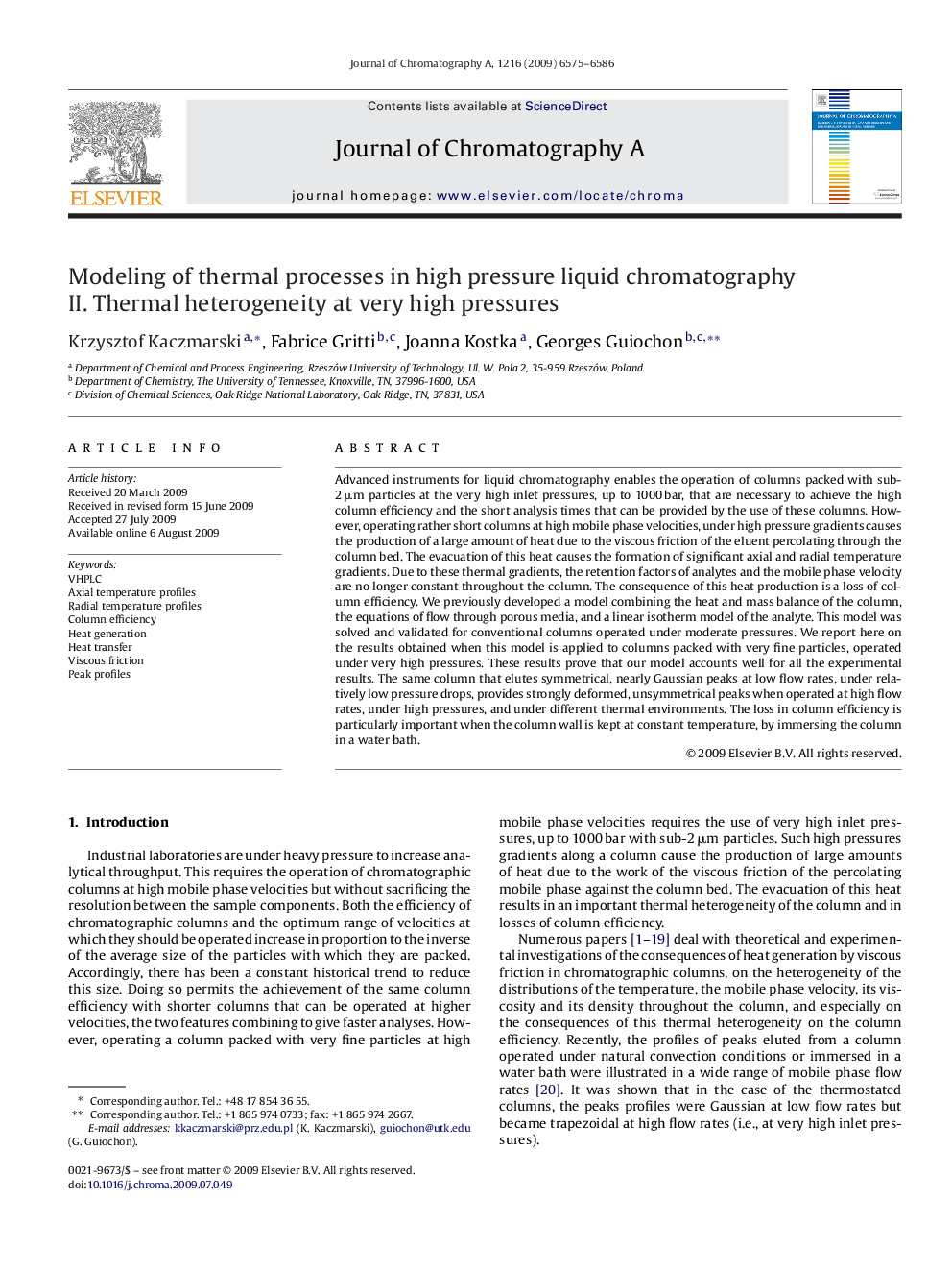| Article ID | Journal | Published Year | Pages | File Type |
|---|---|---|---|---|
| 1210659 | Journal of Chromatography A | 2009 | 12 Pages |
Advanced instruments for liquid chromatography enables the operation of columns packed with sub-2 μm particles at the very high inlet pressures, up to 1000 bar, that are necessary to achieve the high column efficiency and the short analysis times that can be provided by the use of these columns. However, operating rather short columns at high mobile phase velocities, under high pressure gradients causes the production of a large amount of heat due to the viscous friction of the eluent percolating through the column bed. The evacuation of this heat causes the formation of significant axial and radial temperature gradients. Due to these thermal gradients, the retention factors of analytes and the mobile phase velocity are no longer constant throughout the column. The consequence of this heat production is a loss of column efficiency. We previously developed a model combining the heat and mass balance of the column, the equations of flow through porous media, and a linear isotherm model of the analyte. This model was solved and validated for conventional columns operated under moderate pressures. We report here on the results obtained when this model is applied to columns packed with very fine particles, operated under very high pressures. These results prove that our model accounts well for all the experimental results. The same column that elutes symmetrical, nearly Gaussian peaks at low flow rates, under relatively low pressure drops, provides strongly deformed, unsymmetrical peaks when operated at high flow rates, under high pressures, and under different thermal environments. The loss in column efficiency is particularly important when the column wall is kept at constant temperature, by immersing the column in a water bath.
